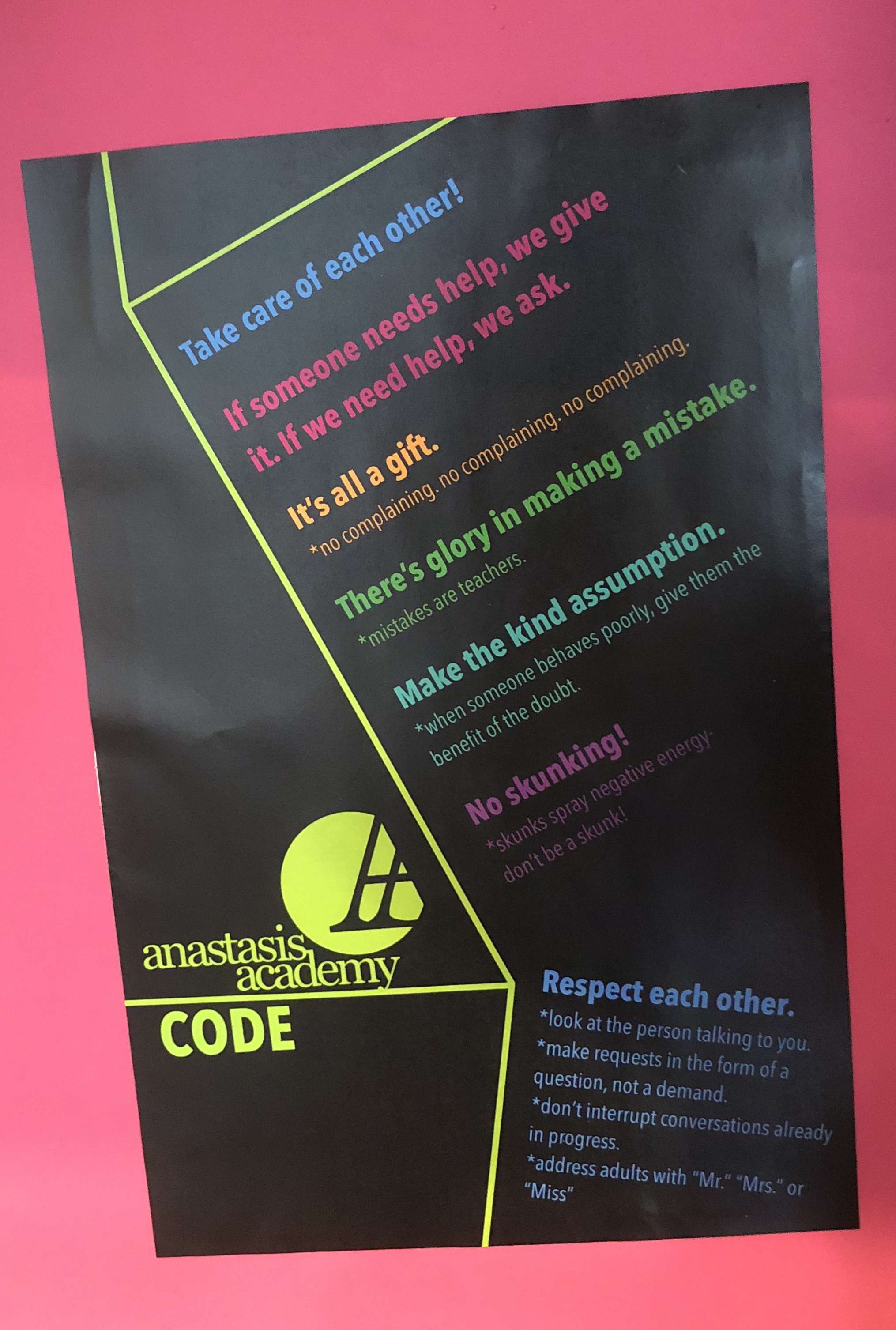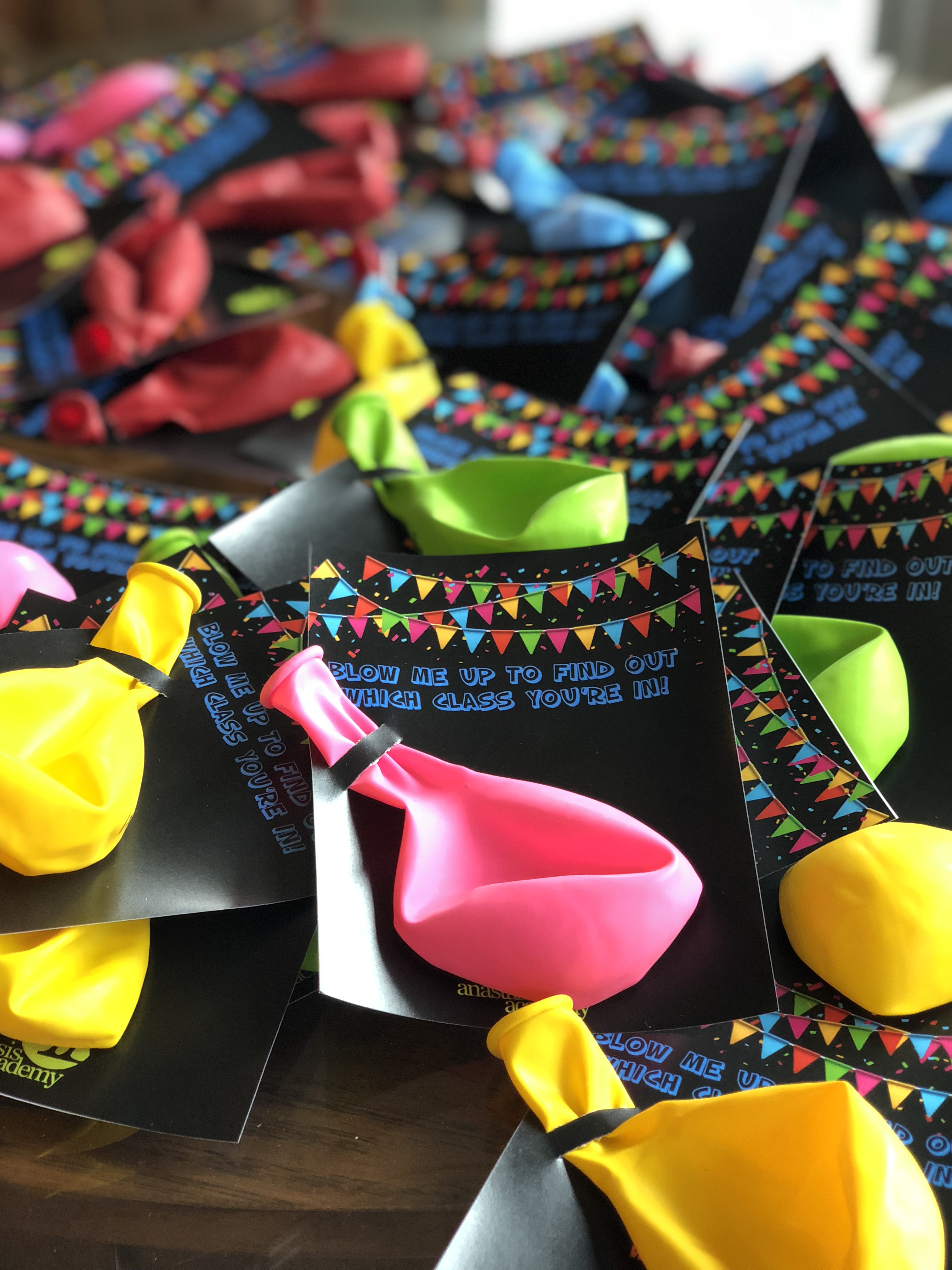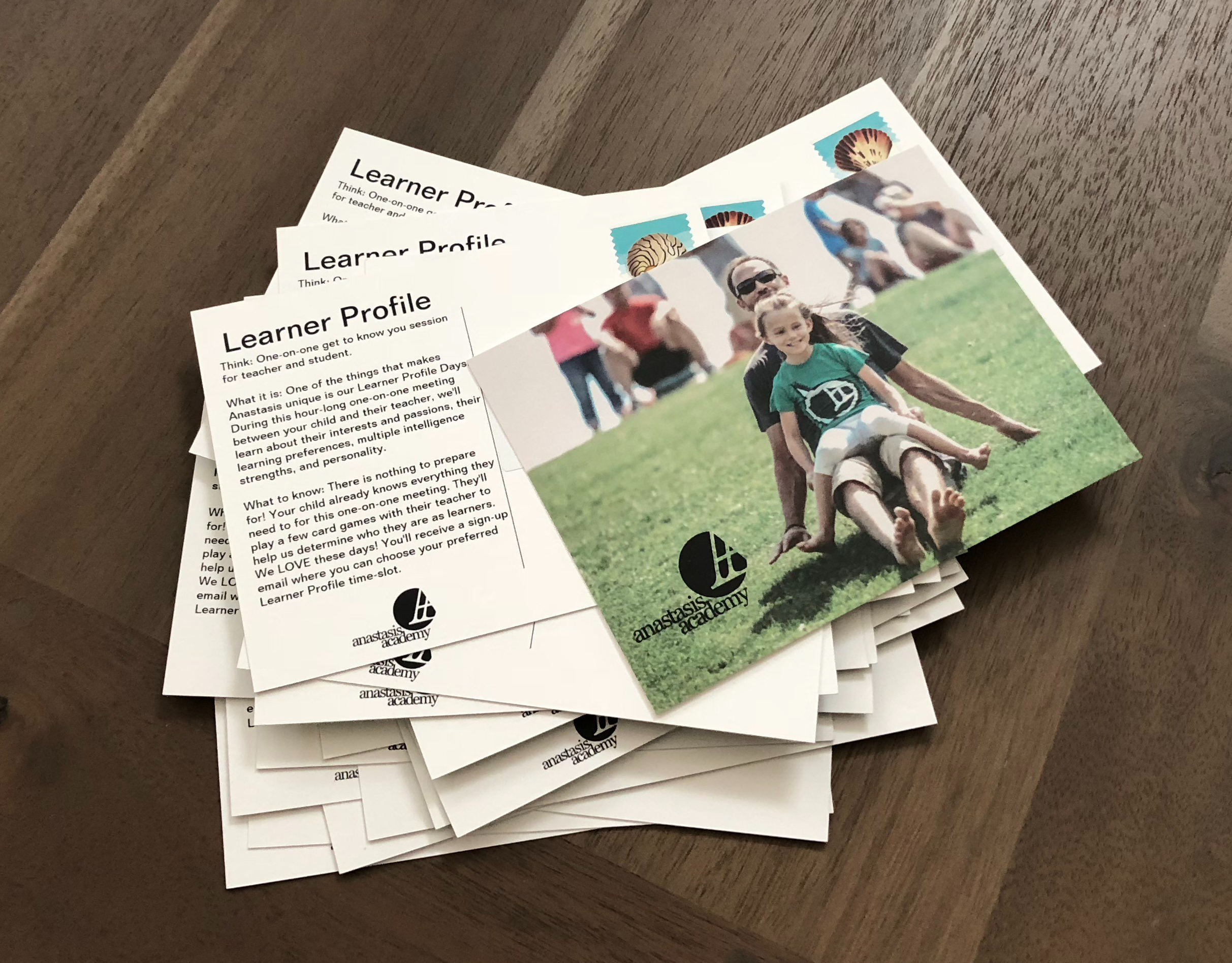Every summer has the same rhythm for me. Most days consist of reading (also known as feeding my soul) and planning for the upcoming school year. Though I truly enjoy every season in Colorado, the rhythm of summer is my favorite. It gives me time to dream and to prepare for the upcoming year. Summer for me is an indicator of space. Space to take deep breaths, to learn from others, and to iterate and dream.
Anastasis is a school without curriculum; by that, I mean that we don’t purchase a curriculum from a big publishing company. I haven’t found a curriculum that knows our students (with names) the way that my teachers know our students (with names). They don’t know our students the way I know our students. Summer is the time that I build a framework for Anastasis teachers. An inquiry guide. Inquiry is the philosophy that drives learning at Anastasis. I love inquiry because it is a natural differentiator. Within an inquiry philosophy, students meet the learning where they are. Inquiry is a transformational, life-changing framework. It’s one that empowers kids.
12 years ago (with a lot of help from my PLN, blogger alliance friends) I learned about, and fell in love with, the International Baccalaureates PYP Framework. Through blogs, Twitter conversations, and the Reform Symposium Conference, I got a behind the scenes look at inquiry within the PYP happening in countries and classrooms around the world. There are six themes within the framework: Who We Are, Where We Are in Place and Time, How We Express Ourselves, How the World Works, How We Organize Ourselves, and Sharing the Planet. I have yet to find any learning under the sun that doesn’t fit into one of these six categories. We use this framework at Anastasis as our launching point. In the summer, I choose a lens for our Primary, Intermediate, and Jr. High students to explore each inquiry Framework.
This is the time when I get to dream. My dreaming takes shape as a lens, a question, several lines of inquiry, and some provocations that teachers and students might dig into. These dreams and frameworks turn into absolute masterpieces when my teachers and students get ahold of them. Each of us comes with our own history, our own worldview, our own experiences, our own connections, each of us knows our students (with names). And this makes the “curriculum” richer. The true beauty of inquiry is the way that it grows and meets everyone who interacts with it.
As I dreamed up the Where We Are in Place and Time block, I came with my own background and ideas. When my teachers and students got ahold of it? MAGIC!
Here are the lenses I offered:
Primary: Children in the past live differently than we do today. (Within this I shared some lines of inquiry including: how has school changed over time, what kinds of games did your parents play as kids, how has transportation changed over time (how did this impact exploration and migration), how has food and access to food and food technology changed over time, what has been the impact of invention over time, how has technology changed over time, what is a timeline, how did migration and exploration change how children in the past lived, and how has literature and books children read change over time?)
Intermediate: People migrate with different reasons and with wide-ranging effects. (Within this, some of the lines of inquiry included: what are the reasons people migrate, what is the emotional impact of migration, what are the effects of emigration and immigration, what is manifest destiny, what is the Oregon Trail, what human circumstances and challenges lead to migration, what is the history of migration, how has transportation throughout time impacted migration, what is the cultural impact of migration, what is the governments role in migration?)
Jr. High: Migration happens for a variety of reasons. (The lines of inquiry included: what is the history of migration, what are the reasons for migration, what is the impact of migration-to the areas being left and the areas where relocation takes place, what are the hardships and successes of migration, how did transportation impact migration, how does perspective impact migration, what is the cultural impact of migration, what is the government’s role in migration, what is the emotional impact of migration, what are the effects of emigration and immigration?)
Watching this inquiry block unfold in real time as teachers and students engage it, I’m again reminded of the beauty of inquiry.

Our Primary students just got to experience an immigration day. After reading, “Ellis Island-a History in Many Voices” by Louise Peacock and exploring immigration through books, videos, and discussions, students experienced their own Immigration Day. Our incredible primary teachers had students dress as immigrants coming to America for the first time. Each received a country of origin and mini backstory. Each created and packed a suitcase filled with the items they would choose to bring with them on a long journey. Each item lovingly considered and included in the small case they were allowed to bring aboard the “ship.” Students were divided into classes on the ship. First class got the best seats, on top of the table, second and third class on the deck below, under the table. Each student received a passport and papers they would need to keep with them. Students had five different stops when they arrived to “Ellis Island:” Medical, Information, Baggage, Passport, and Interview. They were examined by a nurse and doctor, eyes, ears, throat, and skin checked. At the information room, students had to fill out a form which included information from their passports and questions regarding their life in America. Students were interviewed by officials, asked questions about their plans and intent in America. How would they earn money? Where did they plan to live? At each room, if our student immigrants were approved, they would receive a stamp in their passport and sent to the next room. Each of the five items that the students packed in their suitcase was closely inspected with questions about why they chose those items. Students watched, Coming to America by Neil Diamond. Pictures were taken for passports and a new identity, and nationality were granted. Each student created a reflective journal about their journey to America with illustrations.
Inquiry is immersive. Students get to experience their learning.

Our Intermediate and Jr. High students have had the opportunity to experience their learning during this block in different ways. Our intermediate students visited 4 Mile Historic Park where they stepped into the past and saw the world through their ancestor’s eyes. One of our Anastasis teachers immigrated to America from South Africa. She shared her long immigration journey with students including the absolute joy at being declared a US citizen. Next, our students heard from a parent who is considered an illegal immigrant, though he has lived in the United States since he was two years old. He was able to share his experiences with the immigration process in America. Colorado refugee students joined our students for an afternoon of learning, soccer, dancing, and lunch. Anastasis students had the opportunity to hear their stories of fleeing a country and finding refuge in the US, as well as connect with them through play. This week our Jr. High students tutored refugee students in English and Math at their home school. In the coming weeks, these students will visit the Mango House (a non-profit that provides services to refugees) and attend a citizenship ceremony.
Inquiry is so much bigger than a curriculum guide. It’s about connecting students with stories and growing their awareness. It’s about seeing people. Inquiry is immersive learning. This is bigger than a worksheet or a research paper. This learning is absolutely transformational.
Take a look at some of our student reflections after the immigration stories:
We often don’t understand the circumstances in our world until we experience them. As we listened to the two people talk today, I realized how much sympathy we need for people that are immigrating to our country. As Miguel said, “The sun rises for everyone.” It really struck me how much joy we can find if we try to. We are often so doted on and spoiled that we expect the joy to come to us. Though sometimes we need to go out and change our perspective. My biggest shock today was how happy these two people were despite their trials. I hope I can apply their outlook on life in my own journey. -Anastasis Student
Everyone wants to see the sun but the sun rises for everyone, you just have to look for it. When people see an immigrant, they think “criminal, illegal, job stealer”, they don’t think, “person, mother, father, sister, brother.” People don’t like people who are different from them, but if everyone were the same, we would end up with a society like The Giver. You cannot judge a book by a cover; you cannot judge an immigrant without knowing their story. – Anastasis Student
I have traveled the lands and witnessed the world unfold. I’ve seen God, in seminaries and in the ground we stand on. I’ve been on an odyssey, a grand tour of our world, yet I see the light covered by darkness. I watch as two sides fight, spewing lies and frustration, placing more cement over the towering wall, looking down at us. Both sides making one massive monster, in the shape of a barrier. Now the wall has become a lens, now we face the beast. -Anastasis Student
How can you say it? How can you think it? How can you be against it without knowing it? “You have to go through hell to get here.” Immigrants are people who go through hell. The hell they face isn’t just because of the long journey. It is because of the rejection, the unfairness, and so much more that I would not be able to imagine. But, “the sun rises for everyone” (Miguel). Life will get better. With a positive attitude, a goal, and faith, the sun will rise. -Anastasis Student
It was amazing to hear the stories of Mrs. Fun and Miguel. They both have amazing stories and some things that would be very frustrating. It is not so easy to migrate like how some people say. “You have to go to hell to get to America.” Sometimes you just have to walk in their shoes and see what people have to go through to get here. It was good to see the long hard journey to become a legal citizen and the other side of seeing the troubles of trying to help your family while also worrying about becoming a legal citizen. People just have to see what people have to go through to come to this amazing country. It is easy to just say that people should come here the legal way, but we don’t realize the long, hard, expensive journey that it actually is. -Anastasis Academy
God always has the right path for you. You have to be passionate even if you think you were left behind because God has a wonderful plan for you that will come in due time. “The sun rises for everyone.” (Miguel). It took Mrs. Van De Vyver 15 years to become a U.S citizen, and Miguel is still trying to become a citizen after 25 years. Today I was inspired to always keep a good attitude and keep a smile on my face. -Anastasis Student
There’s a long road ahead for the destination we sit comfortably in. Year after years and the road continues. 20-year journey and still the road goes on. “The sun rises for everyone” ( Miguel). Soon you will be able to travel with joy and comfort. Though one person can succeed, there are many more still walking on something they wish to be an odyssey. The dreams sit sweetly in their minds with a hint of opportunity. Let your mind soak in this perspective and live with a new lens. -Anastasis Student
Without the mountain, there is no summit. I sit on a hill watching the sunset over the horizon. If only the sun could last forever, I thought. But of course the light doesn’t last, but neither does the dark. Instead a perfect balance is created. This is the balance that holds the knowledge of the world. Without this balance, the world is broken, and the cycle of the earth will cease causing life its self to fall out of our grasp like sand. But here and now is the present and so here I will dwell shouting praise to God atop the mountain because God is the father of life. And life is in the present. This is why darkness was created. -Anastasis Student
You guys!!! These are 11-13-year-olds reflecting on a shared experience of exploration, story, and seeing people. Show me what textbook can produce this kind of empathy, this level of understanding.
I thought about waiting to post this until after the final experiences with the Mango House and the citizenship ceremony, but honestly, I was too eager to share this hope.
This process of inquiry isn’t always neat and tidy. As principal dreaming in the summer, I often don’t know exactly what it will look like. It’s the result of passionate teachers, our amazing field trip coordinator, and students who keep pushing into learning they are immersed in.
Inquiry is immersive. It’s about story. It’s about connection. It’s about awareness. Inquiry is where the real learning is.










